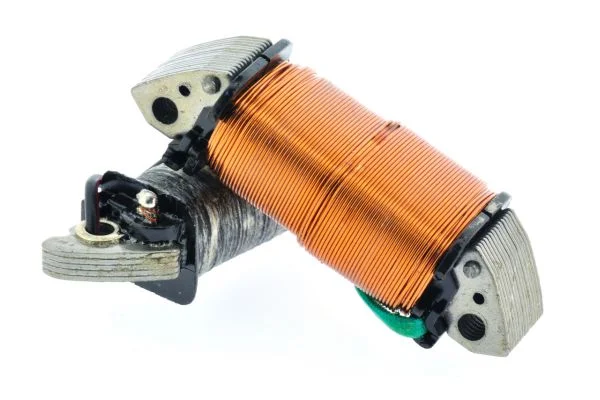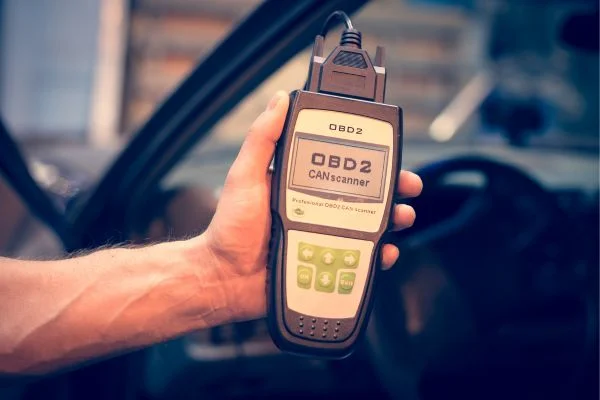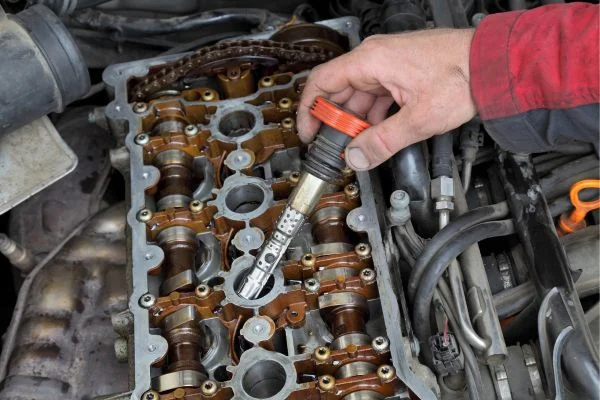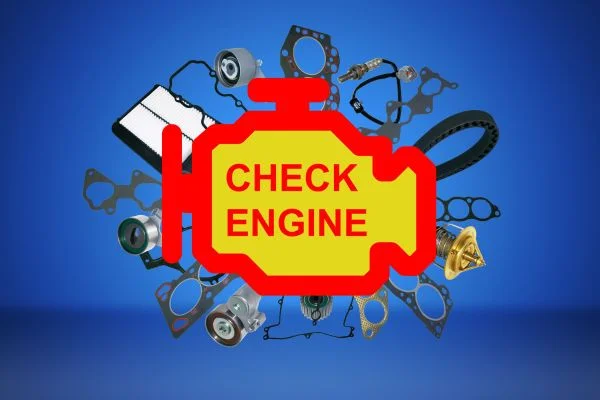A car’s ignition coil can be difficult to diagnose. This isn’t like the spark plugs that you can look at, feel, or even hear. Your car’s engine performance and noise will give you an idea of what might be wrong with it, but it won’t tell you much for a further diagnosis. It is important to know how to test ignition coil without multimeter before replacing them. You can also determine its integrity by checking its common bad symptoms.
How To Test Ignition Coil Without Multimeter?

Every body don’t has multimeter in their hands that’s why its important to know how to test ignition coil without multimeter. Here are the three methods whether you can visual inspect,using spark plug test and OBD Scanner.
Method#1 Visual Inspection

Using a visual inspection, you can determine the condition of your vehicle’s ignition coil without using a multimeter. It is often possible to identify potential problems by examining the physical condition of the ignition coil.
Benefits of visual inspection
A visual inspection is the first step in diagnosing ignition coil problems. Its primary purpose is to identify any visible damage, wear, or corrosion on the ignition coil. You can detect issues that might not be evident through other diagnostic methods by carefully inspecting the coil. With this quick and easy approach, you can determine whether further testing or replacement is necessary.
Steps for Visual Inspection
Step#1 Locate the Ignition Coil: Look in your vehicle’s engine bay for the ignition coil. It usually consists of a small, cylinder component connected to wires or spark plug boots.
Step#2 Inspect for Physical Damage: Be sure to inspect the coil for any physical damage, such as cracks, dents, or leaks. These problems may indicate that the ignition coil may be faulty and needs to be replaced.

Step#3 Check for Corrosion or Rust: Assess the surface of the coil for signs of corrosion or rust. A coil’s performance can be hindered by corrosion if the electrical connections are disrupted. Cleaning corrosion-affected areas or replacing the coil is advisable if you find any visible corrosion.
Step#4 Examine Wire Connections: Check the connections between the ignition coil and the wires or spark plug boots. A loose or damaged connection can cause misfires and poor engine performance.

Interpreting Results
An inspection of the ignition coil can provide valuable insight into its condition. Observe physical damage, such as cracks or dents, or notice corrosion and rust, and you may need to replace the coil. While it isn’t a guarantee that the ignition coil is fully functional, it does rule out certain obvious issues if it is in good physical condition with no visible issues.
Method#2 Testing the Ignition coil Using a Spark Plug

A spark plug can be used to test an ignition coil when you don’t have a multimeter. The spark generated during the testing process can be used to assess the coil’s functionality. Here are the steps for conducting this test, the materials required, and how to interpret the results.
Required Tools and Materials
You’ll need the following materials for testing ignition coil wihtout multimeter
- spare spark plug
- insulated pliers
- well-insulated wire
Step-by-Step Procedure
Step#1 Removing the Spark Plug: Locate your vehicle’s spark plug in the engine bay. Use a wrench or socket set to gently remove the spark plug from its socket. To avoid damaging the electrode, handle it carefully.

Step#2 Connecting the Spark Plug to the Coil: Insert the insulated wire into the terminal of the spark plug you removed. Connect the high-voltage output terminal on the ignition coil to the other end of the wire.
Grounding the Spark Plug

With the spark plug connected to the coil, place the electrode of the spark plug against the engine block or another grounded metal surface. In order to perform proper testing and ensure safety, this grounding step is crucial.
Observing for Spark: Start the engine without turning the ignition key to the “ON” position. You should have a helper crank the engine as you observe the electrode on the spark plug. A strong and consistent spark should be seen at the electrode of the spark plug if the ignition coil is functioning correctly.
Interpreting the Results
There is no difficulty in interpreting the results. You can tell that the ignition coil is likely in good working condition if you observe a healthy spark at the spark plug’s electrode when the engine is cranked. If there is no spark or the spark is weak and inconsistent, it could be a sign that the ignition coil needs to be replaced.
Method#3 Test Ignition Coil with OBD Scanner

In modern vehicles, On-Board Diagnostics (OBD) systems include a standardized OBD port that facilitates diagnostic testing. With an OBD scanner, you can assess various components of your vehicle, including the ignition coil. .
The Role of an OBD Scanner in Vehicle Diagnostics
An OBD scanner connects to your vehicle’s OBD port, normally located under the dashboard, via a handheld device or software interface. The primary purpose of this device is to access and interpret diagnostic trouble codes (DTCs) stored in your vehicle’s computer system. These codes provide insight into a variety of system issues, including ignition coil problems. For quick and accurate diagnosis, an OBD scanner is essential.
Compatibility of OBD Scanners for Ignition Coil Testing

You must ensure that your OBD scanner is compatible with the make and model of your vehicle before you begin the test. A good OBD scanner should be capable of testing ignition coils and compatible with your vehicle’s OBD system. Compatibility information is available in the scanner’s user manual or on the manufacturer’s website.
Step-by-Step Procedure
Step#1 Connecting the OBD Scanner to the Vehicle’s OBD Port: Plug the OBD scanner into the vehicle’s OBD port, typically located beneath the dashboard. Connect the scanner to your vehicle’s computer using a secure connection.
Step#2 Accessing the Ignition Coil Test Function: Locate the ignition coil test function in the scanner’s menu. It may have a different name depending on the brand and model of your scanner, but it should pertain to ignition or coil diagnostics.
Step#3 Initiating the Test and Interpreting the Results: Start the ignition coil test by following the on-screen instructions. Real-time data and test results are provided by the scanner, which communicates with your vehicle’s computer. If you receive a DTC related to the ignition coil, pay attention to it. Generally, a “Pass” result indicates a working ignition coil, while a “Fail” or a specific DTC may indicate a problem. Knowing the common signs of ignition coil problems will help you better understand how to test ignition coil without multimeter.
Common Signs of Ignition Coil Problems
There are a variety of noticeable symptoms associated with ignition coil issues, which can disrupt your vehicle’s performance. Identifying these common ignition coil problems is crucial to diagnosing problems quickly and preventing further damage.

1-Engine Misfires
Inflammation coil problems are often accompanied by engine misfires. A coil that fails to deliver a strong and timely spark can result in incomplete combustion in one or more cylinders. There are noticeable hiccups or jerks in the vehicle’s performance, particularly when accelerating or maintaining a constant speed.
2-Poor Fuel Efficiency
Poor fuel efficiency can also be caused by faulty ignition coils. It can waste fuel and reduce miles per gallon (MPG) when the engine misfires, resulting in incomplete fuel combustion. You may notice a significant decrease in the efficiency of your vehicle if you notice a problem with the ignition coil.
3-Stalling or Rough Idling
If the ignition coil is malfunctioning, the engine may stall or idle rough. Misfires can disrupt the engine’s smooth operation, causing vibrations or irregularities in the idling process. The engine may even stall in severe cases, leaving you stranded.
4-Illuminated Check Engine Light
A malfunctioning ignition coil can cause the vehicle’s onboard computer to generate diagnostic trouble codes (DTCs). A check engine light illuminated on your dashboard is a clear indication that something is wrong. The OBD scanner can be used to identify specific DTCs associated with ignition coil problems, as discussed earlier.

5-Reduced Power and Acceleration
Engine power and acceleration can be reduced when the ignition coil does not produce a strong and consistent spark. Accelerating quickly or climbing steep inclines may cause your vehicle to feel sluggish. In situations where you need immediate power, such as merging onto highways or overtaking others, you may notice a reduction in performance.
6-Increased Emissions
Vehicles with faulty ignition coils emit more harmful pollutants. Unburned fuel can enter the exhaust system and cause increased emissions of hydrocarbons (HC) and carbon monoxide (CO). It is possible to reduce your vehicle’s environmental impact by addressing ignition coil problems promptly.
Conclusion
It is a valuable skill for vehicle owners and enthusiasts to know how to test ignition coil without multimeter. You can assess the functionality of your ignition coil using the methods described in this article, whether you use a spark plug or an OBD scanner. For timely diagnosis and maintenance, it is equally important to recognize the signs of ignition coil problems, such as engine misfires and reduced power.
Taking care of these issues on a regular basis will ensure your vehicle’s smooth operation down the road and prevent more extensive and costly repairs. It is possible to keep your vehicle’s ignition system in optimal condition by applying these methods and insights.
